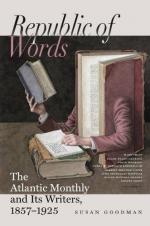A few days after that, I took leave of them on board a merchant ship bound for England, and with a heavy-hearted prayer sped them on their way. On the voyage, as Pintal stood once, trembling in a storm, near the mainmast, a flash of lightning transfixed him.—That was well! He had been distinguished by his sorrows, and was worthy of that special messenger.
* * * * *
That picture,—it was the first and last he painted in California. I kept it long, rejoicing in the admiration it excited, and only grieved that the poor comfort of the praises I daily heard lavished upon it could never reach him.
Once, when I was ill in Sacramento, my San Francisco house was burned, but not before its contents had been removed. In the hopeless scattering of furniture and trunks, this picture disappeared,—no one knew whither. I sought it everywhere, and advertised for it, but in vain. About a year afterward, I sailed for Honolulu. I had letters of introduction to some young American merchants there, one of whom hospitably made me his guest for several weeks. On the second day of my stay with him, he was showing me over his house, where, hanging against the wall in a spare room, I found,—not the Pintal picture, but a Chinese copy of it, faithful in its every detail. There were the several alterations I had suggested, and there the rich, warm colors that Pintal’s taste had chosen. Of course, it was a copy. No doubt, my picture had been stolen at the fire, or found its way by mistake among the “traps” of other people. Then it had been sold at auction,—some Chinaman had bought it,—it had been shipped to Canton or Hong Kong,—some one of the thousand “artists” of China Street or the Victoria Road had copied it for the American market. A ship-load of Chinese goods—Canton crape shawls, camphor-boxes, carved toys, curiosities, and pictures—had been sold in Honolulu,—and here it was.
* * * * *
THE HOUSE THAT WAS JUST LIKE ITS NEIGHBORS.
Oh, the houses are all alike,
you know,—
All the houses alike, in a
row!
You’ll see a hat-stand in the hall,
Against the painted and polished wall;
And the threaded sunbeams softly fall
On the long stairs, winding
up, away
Up to the garret, lone and
gray:
And you can hear, if you wait awhile,
Odd little noises to make you smile;
And minutes will be as long as a mile;—
Just as they would in the
house below,
Were you in the entry waiting
to go.
Oh, the houses are all alike,
you know,—
All the houses alike, in a
row!
And the world swings sadly to and fro,—
Mayhap the shining, but sure the woe!
For in the sunlight the shadows grow
Over the new name on the door,
Over the face unseen before.
Yet who shall number, by any art,
The chasms that keep so wide apart
The dancing step and the weary heart?
Oh, who shall guess that the
polished wall
Is a headstone over his neighbor’s
hall?




